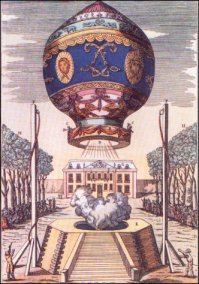|
You Fly, Girl
|
Elisabeth ThibleOn June 4, 1784, Madame Elisabeth Thible became the first woman to make a "free flight" - riding aloft in a Montgolfier balloon with Monsieur Fleurant.Thible, of Lyons, France, wore a lace-trimmed dress and a feathered hat. Pilot Fleurant was an artist with a passion for ballooning. Madame Thible would not make another ascent (as far as is known), but she nevertheless deserves pride of place as the first woman to go aloft.
Bibliography
What was happening in the world during 1784? On January 6, the Turks agreed to Russia's annexation of the Crimea in the Treaty of Constantinople. Russia at this time was ruled by Catherine II, later to become known as Catherine the Great. She was one of the very few female rulers of a country. Turkey was a powerful country at this time, known as the Ottoman Empire. On January 14, the United States Congress ratified the Treaty of Paris with Great Britain, which would officially end the American Revolutionary War. The Treaty had been signed in 1793, but formalities of ratification taking place around the world took several more months. (Note that there was no President of the United States at this time, as the government of the country was still in flux -- George Washington would not become president for ten more years -- in 1794.) On February 28, John Wesley (founder of the Methodist church in England) officially granted Methodists in the United States the right to form their own Church. On August 16, Britain, still ruled by King George III, created the colony of New Brunswick, in Canada. Many Loyalist refugees from the United States had fled to this area, increasing its population. On September 22, Russia established a colony at Kodiak, Alaska. In the United States, on November 26, the Roman Catholic Apostolic Prefecture of the United States was established in Baltimore. On December 25, after receiving its charter from John Wesley almost a year ago, the Methodist Episcopal Church in the United States was officially formed at the "Christmas Conference," led by Thomas Coke and Francis Asbury.
|
All text © 2006, 2007 Volcano Seven unless otherwise credited.
All illustrations retain original copyright.
Please contact us with any concerns as to correct attribution.
Any questions, comments or concerns contact Volcano Seven.
